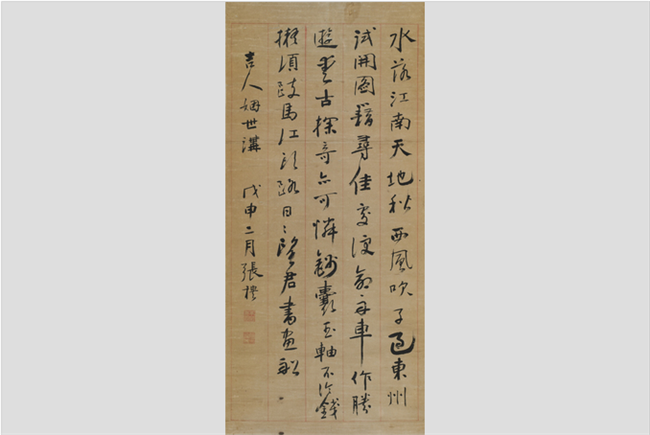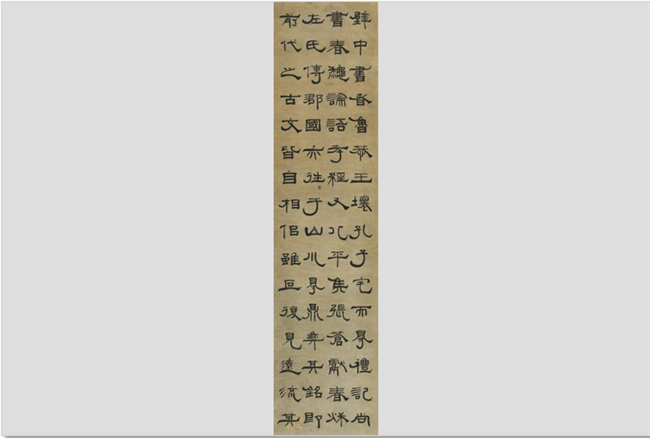Calligraphy
Shanxi has a long history in calligraphy, with its roots tracing back to Madam Wei, the teacher of China's greatest calligrapher Wang Xizhi in Eastern Jin Dynasty (317-420). Since then the province has been home to a great number of renowned artists and great works. Calligraphy collections at Shanxi Museum include the tombstone and stele inscriptions in the Northern Dynasties as well as handwritten sutras in the Sui, Tang, Song and Yuan dynasties as well as works created by renowned calligraphers since the Ming Dynasty, including Song Ke, Zhu Yunming, Wen Zhengming, Dong Qichang, Chen Jiru and Zhang Ruitu. The Museum has a great number of collections of works by Qing Dynasty calligraphers. The most prominent is Fu Shan, who was both a renowned calligrapher and stele inscription researcher. The city has also collected works by Qing Dynasty masters such as Liu Yong, Zheng Xie, Ruan Yuan, Yi Bingshou, Zhang Tingji, Bao Shichen, He Shaoji and Wu Changshuo. All the collections in the museum can help researchers and enthusiasts understand the evolution of Chinese calligraphy.

Semi-cursive script of a poem called "Subsiding water in the autumn of Jiangnan", Zhang Mu, Qing Dynasty
Script on paper, 130.5 cm in height, 50 cm in width
Depicting the artistic conceptions of the poem "Subsiding water in the autumn of Jiangnan", the script was written by Qing Dynasty calligrapher Zhang Mu (1805-1849). The calligrapher, also named Yinghuang and Shizhou, was a native of Pingding, Shanxi province. He was also a renowned patriot, geography scientist and poet in Qing Dynasty. He devoted much of his energy in the research of the geography of Northwest China's frontiers and the history of Mongolia, and he was the author of several books on Mongolian history and geography of Russia. Zhang was a good friend of Qi Junzao, another renowned calligrapher. They shared same similarities in artistic style. But Zhang's own style features elegant and heavy strokes, freedom in expression and neat layout. He was a master of various forms of Zhuan, seal engraving, Li and others.

One of the four scrolls for the book of The Origin of Chinese Characters, Yang Du, Qing Dynasty
Script on paper, 168cm in height, 40.7 cm in width
The Origin of Chinese Characters is a book by Han Dynasty linguist Xu Shen. It was the first comprehensive dictionary in China, analyzing the origin and structure of Chinese characters. The scroll reads "When King Gong of the Lu State ordered to dismantle the residence of Confucius, he found a number of ancient classics. These classics, along with other books and cultural relics found, presented the written forms of ancient Chinese characters. But some of the contemporary people are suspicious of the authenticity of the characters because they find the ancient characters quite different from today's writings. They are wrong because they don't understand the rules and evolution of Chinese characters."
Yang Du, with the courtesy name of Gongfan, was also called Qinru, Qiumei or Beiqu. He was a native of Xiangning in Shanxi province. He was a renowned scholar in local history and was the author of a number of historical books for places including Shanxi, Weizhou and Daizhou. During his times, he was also a famed poet. He was an expert calligrapher, who is especially skilled in stone and metal inscriptions. His calligraphy is elegant and simple in style.



